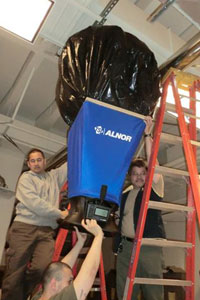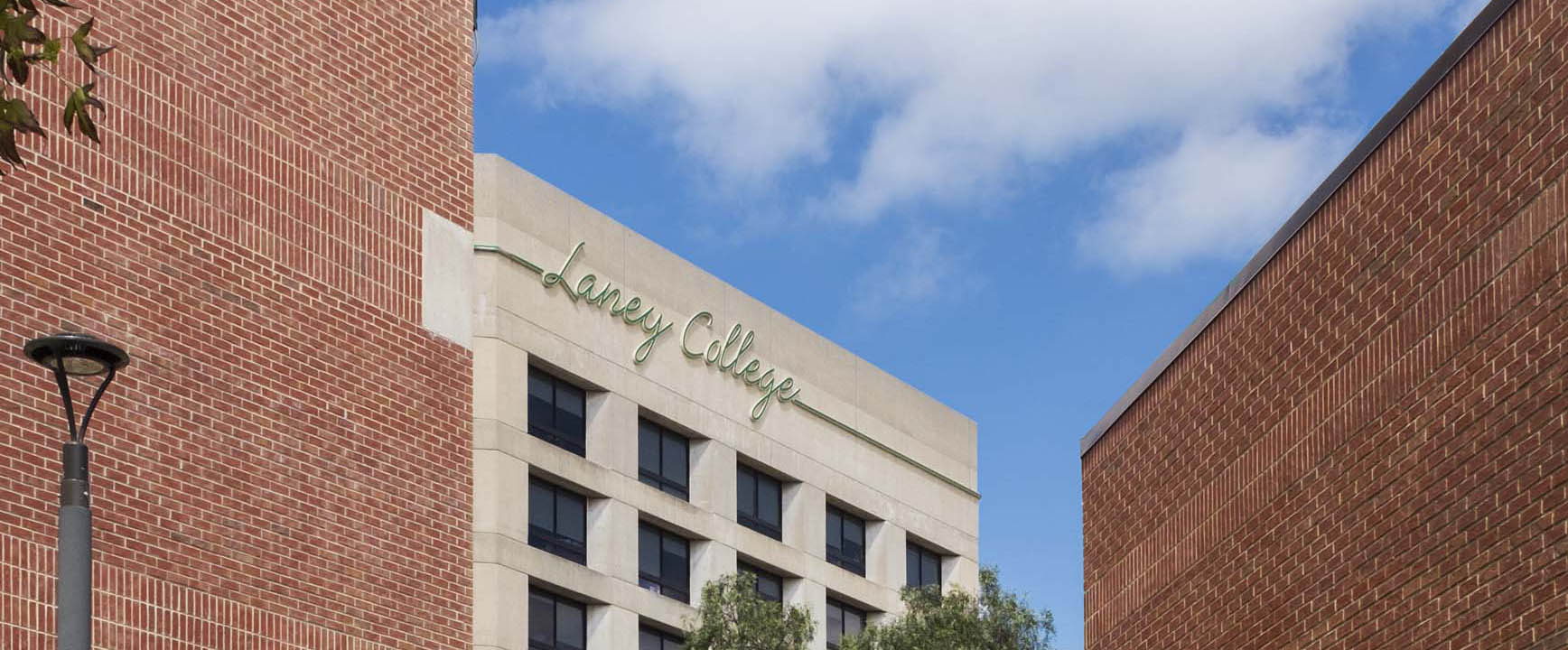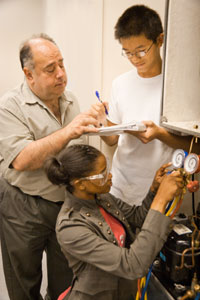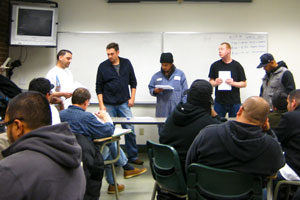Through a grant from the National Science Foundation (NSF), The Environmental Control Technology (ECT) Program at Laney College has been given the opportunity to focus on broadening and deepening the implementation and integration of Problem Based Learning (PBL) within the current ECT program curriculum.
Learn more about Problem Based Learning (PBL)
What is PBL?
What is “Problem-Solving” versus “Troubleshooting”?
What is the role of the instructor in PBL?
How are Laney ECT students responding to PBL?
How is Laney supporting our ECT instructors through the PBL process?
Problem Based Learning Tools
Problem Based Learning (PBL) Worksheets
Problem Based Learning (PBL) Sample Scenarios
What is PBL?
 Problem-based learning (PBL) is a learner-centered pedagogy in which students explore a subject in the context of complex, multifaceted, and realistic problems. The goals of PBL are to help the students develop flexible knowledge, effective problem solving skills, self-directed learning, effective collaboration skills and intrinsic motivation.
Problem-based learning (PBL) is a learner-centered pedagogy in which students explore a subject in the context of complex, multifaceted, and realistic problems. The goals of PBL are to help the students develop flexible knowledge, effective problem solving skills, self-directed learning, effective collaboration skills and intrinsic motivation.
Through PBL, students:
- Become immersed in open-ended scenarios simulating real-life work situations
- Work in groups, identify what they already know, what they need to know, and how and where to access new information that may lead to resolution of the problem
- Explore a problem or scenario that is presented with missing information and is open-ended allowing for critical thinking and analysis, thus generating a range of solutions that have not been suggested before
- Determine if the problem suggested is the real problem or whether there is a different problem that needs to be solved
What is “Problem-Solving” versus “Troubleshooting”?
It is important to understand how we distinguish “Problem-Solving” from “Troubleshooting”.
Troubleshooting is often taught in building technician or apprenticeship programs as part of a component-level check-list approach, typically resulting in one correct solution.
Problem-Solving is an open-ended inquiry, considering multiple contributing factors and multiple potential solutions that may go beyond the initial definition of the problem. It offers a broader system-level approach to learning.
What is the role of the instructor in PBL?
The role of the instructor is that of a facilitator of learning who supports student teams throughout the process. Laney College instructors, who are working professionals in the industry, bring their expert knowledge and field experiences to the classroom. The PBL approach has enabled the Laney instructors to design scenarios based on current and authentic problematic situations encountered in the operations and maintenance of buildings in the field.
PBL scenarios for Heating, Ventilation, and Air Conditioning (HVAC), Digital Design Controls (DDC), Refrigeration and Testing and Balancing (TAB) are just a few of the many courses at Laney College that can lend themselves to the PBL model of teaching.
By bringing real-world business scenarios to their classrooms, instructors provide students the opportunity to practice analytical and critical thinking skills, team work, problem solving, and skills needed for a successful professional career in the field.
How are Laney ECT students responding to PBL?
Student evaluation data suggest that almost all students were able to identify specific skills practiced under this mode of instruction that were different from traditional classes, particularly: working with others; listening to other points of view; learning from others; and how to offer opinions that differ from those of others.
Furthermore, 80% of students interviewed in 2011 for program evaluation purposes were able to offer at least two ways that what they learned from the PBL experience would help them in future classes or on the job. The most often offered answers contained some mention of getting a bigger picture as a result of the PBL research and teamwork activities.
According to student survey data, 80.8% would select a course involving problem-based learning versus a traditional lecture class. 84.6% of students would recommend a course including problem-based learning elements to a fellow student.
How is Laney supporting our ECT instructors through the PBL process?
The Problem Based Learning methodology supports instructors by encouraging them to utilize a more interactive and inquiry based style of teaching.
The ECT program supports the instructor’s PBL process by convening at least twice a semester for a professional development meeting to collaborate on PBL scenarios and curriculum integration and to provide each other with feedback and encouragement. Our instructors view PBL as an evolving process, where they are continuously learning and adapting the approach in ways that resonates with our student population.
Instructors have reported that they have begun to really enjoy utilizing the PBL approach and have noticed students becoming significantly more engaged in the learning process.








